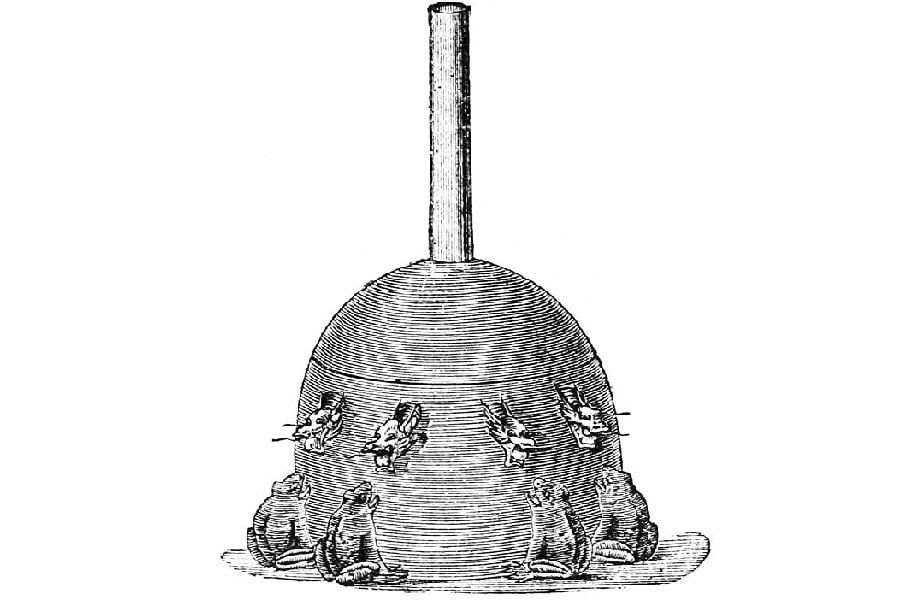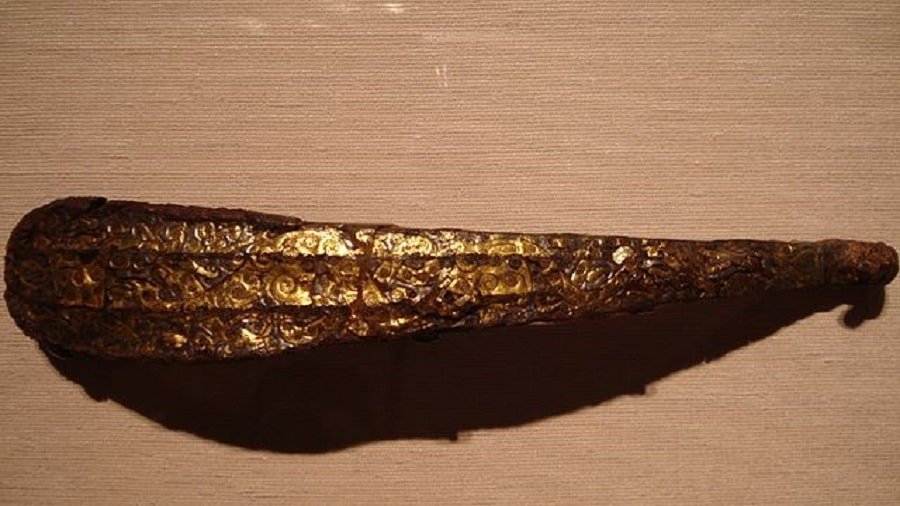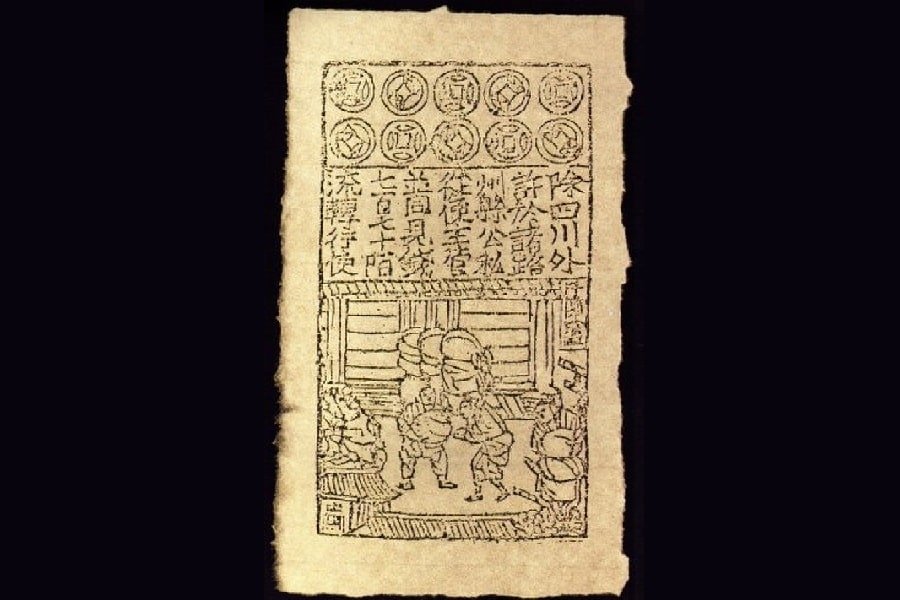There are countless Chinese inventions that changed the world. The greatest Chinese achievements are known as the Four Great Inventions. Although there are only four notable “greats,” China has contributed numerous inventions that have changed the world. Through their innovation, the ancient Chinese created a thriving civilization in the Huang He Valley.
Table of Contents
What is China Famous for Inventing?

China has long since been established as the creator of numerous inventions and scientific discoveries. The famous Four Greats were only the beginning of ancient China’s contribution to mankind. From the old society that gave the world gunpowder and the first-ever handheld crossbows, the rest of the world quickly adopted ancient Chinese technologies.
Being among the top four ancient civilizations in the world (including Mesopotamia, Egypt, and the Indus Valley), China has a rich and varied history. Impressive archaeological discoveries are still being made today, as recently as 2022. With that being said, our historical knowledge is ever-expanding! Who knows what else we’ll discover ancient peoples had invented in years to come.
What are the Four Great Inventions?
When discussing the impact ancient Chinese inventions had on the world, there are generally four inventions that are renowned. Rightfully called the “Four Great Inventions,” these innovations were centuries ahead of their time.
The Four Great Inventions are…
- papermaking
- gun powder
- printing (movable type and woodblock)
- the compass
It is unsurprising that most of ancient China’s greatest inventions occurred during the Golden Age of China. Now, Golden Ages for any country isn’t something to scoff at. China’s Golden Age spanned two separated Dynasties: the Song and the Tang. The Song Dynasty (960-1279 CE) is specifically famous for being an era of technological innovation after it was founded by Emperor Taizu of Song.
The Song Dynasty oversaw the creation of gunpowder, papermaking, and the compass. The later Tang developed movable type and woodblock printing. Of course, other Chinese dynasties throughout history are notable for their own impressive inventions, including the archaic Shang, early Han, and Mongolian-established Yuan Dynasties.
Papermaking – 105 CE

The paper was made over 2,000 years ago by Chinese court official Cai Lun (Ts’ai Lun). As a eunuch employed during the Eastern Han Dynasty, Cai Lun discovered a much more effective way to create a writing surface. At the time, silk – yes, oh-so treasured silk – was the go-to surface to write on, though usually only Chinese nobles and government officials had access to large quantities. After creating a process that combines various bast fibers, an accessible paper was born.
Early paper was made from hemp fibers, fishing nets, and reeds. If you search for DIY paper techniques today, you’ll find that the primary ingredients are old paper and cardboard. Pretty much, being au-naturel is a must and you seriously cannot forget bast fibers.
Compared to the previous silk, Cai Lun’s paper was far sturdier. Also, the process wasn’t nearly as arduous, making it a much more cost-efficient choice. From 105 CE onwards, the paper was the standard writing surface throughout ancient China. Zuo Bo, Cai Lun’s apprentice, made improvements to the papermaking process. Cai Lun became a marquess in 114 CE for his Imperial service and general dedication.
Gun Powder – 9th Century CE

Gunpowder is perhaps one of the more famous innovations attributed to the Chinese. In a crazy twist of events, gunpowder was actually made by complete accident. You see, gunpowder was originally discovered by either alchemists or monks (or both) roughly around the 9th century CE. These monks were trying to develop a life-extending elixir but instead made explosive powder.
Yikes. Talk about having something blow up in your face!
Made from saltpeter, sulfur, and charcoal, gunpowder was an absolute game changer. Not only could things like fireworks (800 CE) be made, but it changed the way ancient weapons functioned and the battlefield was never the same. Rocket cannons were developed by 1200 CE and prototype guns existed by 1000 CE. By the 14th century, firearms and gunpowder spread rapidly throughout Eurasia.
It didn’t take long for gunpowder to enter mass production, especially considering the numerous wars that occurred during the Song and Han Dynasties. Although a far cry from the intensity of the Warring States Period, can you imagine the opposition having rocket cannons while you were a cavalry archer? If you were lucky you’d have some fire arrows or a crossbow (yes they absolutely had those), but c’mon – rockets!
Printing Techniques – 700 CE to the 10th Century CE

According to Ryan Wolfson-Ford for the Library of Congress, printing was invented around 700 CE. The earliest form of printing is woodblock printing. With symbols and designs carved into wooden blocks, it would then be stamped onto a textile or paper surface. It is also known as block printing, because, well, the wooden blocks are sort of a given.
The oldest known example of woodblock printing originates from Japan, being The One “Million Pagodas and Dharani Prayers” (百萬塔陀羅尼) from 764-770 CE. Meanwhile, the oldest surviving piece of woodblock print from China is the Diamond Sutra, dating to 868 CE. Interestingly enough, both pieces are of Buddhist texts, thereby effectively capturing the widespread influence Buddhism had throughout East Asia.
Movable type printing was invented under the Northern Song Dynasty around 1040 CE by Imperial court official Bi Sheng. The first movable type printing was made from porcelain materials and was extremely fragile, even after being adhered to an iron plate. Bi Sheng would carve individual characters onto the porcelain clay plate, making the printing process taxing, to say the least (in modern China, there are over 50,000 Chinese characters)! Wang Zhen, an official from the later Yuan Dynasty (1271-1361 CE), improved the method with the more durable wooden movable type.
The Compass – 206 BC
The final of the major four inventions created within ancient China was the navigational compass. First developed during the Han Dynasty, the world’s first compasses were made of lodestone, a naturally magnetized iron. Dubbed the “South Pointing Fish” or the “South-Pointer,” early compasses looked vastly different from the circular doohickey of the modern world.
They looked like a wide spoon that would rest on a flat, cast bronze surface. Later, the plate was exchanged for a small bowl and the spoon-shaped instrument was replaced by a magnetized needle. During the Song Dynasty, these early compasses were used for land and marine navigation. At this point in history, wet and dry compasses had also been invented.
With the invention of the accurate compass, China was able to expand its trading network and sail as far as East Africa. Additionally, the luopan, a magnetic compass based on geomancy, has been reportedly around since the Tang Dynasty. Used in practicing feng shui, the luopan required an audit to use and pointed to the south rather than the north. While compasses usually had four marked cardinal directions, the luopan had 24 distinct directions.
What are 8 Important Chinese Inventions?
Of course, the ancient Chinese invented much more than the Four Great Inventions. Below is a list of eight other inventions we can thank them for. Though, if we’re honest, eight only scratches the surface of inventions that the Chinese have contributed throughout history.
1. Silk – Around 2696 BC

In all of Chinese history, silk has been the most famous – and demanded – invention. A luxury good to the western world, there was an entire heist in the sixth century CE planned to find the secrets of silk making. Afterward, the Byzantine Empire built a bustling silk industry.
According to myth, the process for creating silk and the silk loom was invented by Leizu, wife of the legendary Yellow Emperor in the 27th century BCE. So famed was Chinese silk that trade routes connecting Eurasia and North Africa were dubbed the Silk Road. Honestly, of all the amazing things made in China, none really stirred up as much hubbub as silk.
Before the invention of paper, silk was used to produce clothes, nets, writing materials, and stringed instruments. Silk production is an extremely time-consuming process, so an alternative was welcomed, to say the least. Besides Chinese porcelain, Chinese silk was one of the most high-demand luxury goods in the world. In fact, China was (and still is) the largest purveyor of silk.
2. Alcohol – 8000 to 7000 BC

If we were to ask who was the first to brew alcohol, you may say they were inhabitants of the Arabian Peninsula. That was the common belief up until 2013, when a 9,000-year-old pottery fragment from Henan, China was discovered to have the presence of alcohol. Now, Henan is located in Central China, in close proximity to the Huang He Valley and the Yellow River. Called the cradle of Chinese civilization, the Huang He Valley – and Henan in particular – has an extensive history.
Most of the pottery vessels that have evidence of alcohol are believed to have held rice beer. More impressively, rice was still in its early cultivation stages during this period in Chinese history and was a relatively newer crop. That stopped no one, and distilled rice wine was down to an art by the 7th century CE. Outside of regular consumption, alcohol in Chinese history was frequently used as libations and as a spiritual offering to the departed.
3. Umbrella – 16th to 11th Centuries BC

The umbrella, at least a prototype that bears semblance to the modern umbrella, appears to have been invented in China during the Shang Dynasty (1600-1046 BCE). Then just bamboo poles with animal skins stretched across their supports, it did little to fend off the rain. However, early umbrellas were incredible at providing shade during sweltering summers.
The Shang Dynasty is also known to have created the first Chinese characters. One of their capitals, now called Yinxu, had evidence of oracle bones that displayed the earliest specimen of Chinese writing.
Earlier “umbrellas,” or parasols, are believed to have been invented at some point during ancient Egypt, which manifests as a massive fan of palm leaves. Not only did these parasols beat the heat, but they were also stylish. With the heat we’ve been having lately, perhaps these parasols are a little overdue for a comeback.
4. Cast Iron Smelting – 5th Century BC

Invented during the Zhou Dynasty during the 5th century BCE, cast iron was made from melting pig iron. Pig iron is also known as crude iron; it is traditionally created by heating iron ore in a blast furnace. Once molten, the iron is poured into a sand mold. The earliest known example of cast iron originates from the Chinese Han Dynasty as cast iron cookware.
Cast iron was later refined in a process called annealing, which was used as far back as 900 years ago. Annealing weakened the metal, but the heat treatment improved its overall malleability. Following the development of annealing farming tools and even buildings became made of iron. Otherwise, the iron itself was first invented by the Hittites of ancient Egypt to enhance numerous ancient Egyptian weapons.
5. Earthquake Detector – 132 CE

Much like the seismometer today, this ancient Chinese invention was invented during the later Han Dynasty by mathematician Zhang Heng. Perhaps among the greatest Chinese inventions, Zhang Heng’s seismometer had proven to accurately detect earthquakes from the far reaches of the Han kingdom. Described in court records as a cylindrical jar adorned with eight dragons, each serpentine figure held a ball in its mouth. During the instance of an earthquake, the ball would fall.
READ MORE: Who Invented Math? The History of Mathematics
Modern seismographs – invented in the 19th century – looked to the early earthquake detection of Zhang Heng to measure earthquakes of today. It is thought that the invention worked off of the principle of inertia. In this case, the outside force would in fact be the tremors. The inventor of the first earthquake detector, Zhang Heng, is also credited with inventing the world’s very first water-powered armillary sphere.
6. Toothbrush – 9th Century CE
While the ancient Egyptians and Babylonians provide evidence of ancient oral hygiene by way of chew sticks, we can thank the Chinese for the invention of bristled toothbrushes. A far cry from the plastic and nylon we know, the first bristle toothbrush was made of bamboo (or bone ivory) and stiff hog hair sometime during the Tang Dynasty (618-906 CE). When the invention spread to the West, hog hair was replaced with stiff horsehair. Rumor has it, Napoleon Bonaparte was a big fan of horsehair bristles!
The familiar toothbrush of today was not invented until 1938, but in no way was the bristled toothbrush a new phenomenon. More than that, we can safely scrap the misconception that our early ancestors had no idea about the importance of oral hygiene.
7. Paper Money – 9th Century CE

If there’s one thing we know about ancient history it is that paper currency wasn’t always around. Instead, metal coins were the standard. The development of paper making and early printing was a game changer. Since the ancient Chinese invented both, they had more accessible options for currency.
The banknote was initially a merchant’s receipt of deposit during the Tang Dynasty. Metal coins, the archaic standard, were far too heavy to reasonably transport for large commercial transactions. That being said, real paper money (called “Jiaozi”) that could be equally exchanged with metal coinage wasn’t officially implemented until the Song Dynasty, at least 53 years later.
There is evidence of paper money from the Yuan Dynasty established by Kublai Khan, with surviving examples dating to 1287 including its printing wood plate. The Yuan Dynasty would be the first in history to use paper currency as its only legal tender. Eventually, this led to an economic collapse from hyperinflation.
The first Western money was initially issued in 1661 in Sweden, with the American colonies following suit in 1690. Germany was amongst the last of the western world to officially adopt paper currency, only doing so in 1874.
8. Manual Seed Drill/Crop Row Farming – 2nd Century BC
The Neolithic Revolution (also known as the First Agricultural Revolution) began over 12,000 years ago at the end of the last Ice Age. With it, humanity transitioned from hunter-gatherer societies to permanent settlements. These permanent settlements came from agricultural development, which allowed early man to become less reliant on the migration patterns of wildlife. More importantly, with successful crops came population booms: larger populations could now be supported by these newfound food sources.
One invention the Chinese were the first to use is the multi-tube iron seed drill, invented during the 2nd century BCE in China’s Han Dynasty. With the seed drill came a food surplus, thus creating a stable foundation for societal growth. To the same extent, the Chinese also developed crop row farming.
Beginning in the 6th century BCE, the Chinese would plant seeds in individual rows. Doing so reduces seed loss, compared to other farming methods of the day. It would be another stretch of over 2,000 years before the western world adopted the handy farming method.